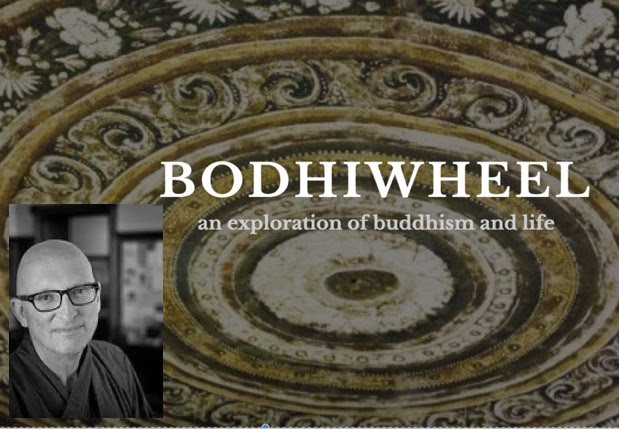This Monday Alison will facilitate. She shares:
Last Monday, Brother Phap Vu from the Deer Park Monastery in California visited our Sangha and shared some of his wisdom in a question and answer session. During the session, one of our Monday night practitioners expressed heartfelt gratitude to Brother Phap Vu and all the other monastics for their dedication to the practice. Specifically, she noted how it was a source of comfort to her to know that even when her own practice might have fallen short, at least in her own eyes, that the monastics were out in the world shoring up the mindfulness community through their dedicated practice.
This was an interesting and moving exchange for me because I had never given much thought to the monastics in terms of their own practice of sangha and what it might mean to us as lay practitioners although I have an abundance of gratitude to the Opening Heart Mindfulness Community because, as Annie Mahon once expressed in one of her mindfulness workshops, sangha is essential because "it's too hard to do it alone."
So, this week, I wanted to share some of Thich Nhat Hahn's thoughts on what is meant by sangha and explore further what sangha has meant to your own practice. The following are excerpts from "The Practice of Sangha" by Thich Nhat Hahn:
"A sangha is a community of friends practicing the dharma together in order to bring about and to maintain awareness. The essence of a sangha is awareness, understanding, acceptance, harmony and love. When you do not see these in a community, it is not a true sangha, and you should have the courage to say so. But when you find these elements are present in a community, you know that you have the happiness and fortune of being in a real sangha."
********
"In the Buddhist scriptures it is said that there are four communities: monks, nuns, laymen and laywomen. But I also include elements that are not human in the sangha. The trees, water, air, birds, and so on can all be members of our sangha. A beautiful walking path may be part of our sangha. A good cushion can be also. We can make many things into supportive elements of our sangha. . . . It is said in the Pure Land Sutra that if you are mindful, then when the wind blows through the trees, you will hear the teaching of the Four Establishments of Mindfulness, the Eightfold Path, and so on. The whole cosmos is preaching the buddhadharma and practicing the buddhadharma. If you are attentive, you will get in touch with that sangha."
*******
"Sangha as our roots. I don't think the Buddha wanted us to abandon our society, our culture or our roots in order to practice. The practice of Buddhism should help people go back to their families. It should help people re-enter society in order to rediscover and accept the good things that are there in their culture and to rebuild those that are not. . . .
Suffering (dukkha) is one of the biggest problems of our times. First we have to recognize this suffering and acknowledge it. Then we need to look deeply into its nature in order to find a way out. If we look into the present situation in ourselves and our society, we can see much suffering. We need to call it by its true names-loneliness, the feeling of being cut off, alienation, division, the disintegration of the family, the disintegration of society.
Our civilization, our culture, has been characterized by individualism. The individual wants to be free from the society, from the family. The individual does not think he or she needs to take refuge in the family or in the society, and thinks that he or she can be happy without a sangha. That is why we do not have solidity, we do not have harmony, we do not have the communication that we so need.
The practice is, therefore, to grow some roots. The sangha is not a place to hide in order to avoid your responsibilities. The sangha is a place to practice for the transformation and the healing of self and society. When you are strong, you can be there in order to help society. If your society is in trouble, if your family is broken, if your church is no longer capable of providing you with spiritual life, then you work to take refuge in the sangha so that you can restore your strength, your understanding, your compassion, your confidence. And then in turn you can use that strength, understanding and compassion to rebuild your family and society, to renew your church, to restore communication and harmony. This can only be done as a community-not as an individual, but as a sangha.
*******
"We need a sangha. In my tradition we learn that as individuals we cannot do much. That is why taking refuge in the sangha, taking refuge in the community, is a very strong and important practice. When I say, "I take refuge in the sangha," it does not mean that I want to express my devotion. No. It's not a question of devotion; it's a question of practice. Without being in a sangha, without being supported by a group of friends who are motivated by the same ideal and practice, we cannot go far.
If we do not have a supportive sangha, we may not be getting the kind of support we need for our practice, that we need to nourish our bodhichitta (the strong desire to cultivate love and understanding in ourselves). Sometimes we call it "beginner's mind." The mind of a beginner is always very beautiful, very strong. In a good and healthy sangha, there is encouragement for our beginner's mind, for our bodhichitta. So the sangha is the soil and we are the seed. No matter how beautiful, how vigorous our seed is, if the soil does not provide us with vitality, our seed will die.
To practice right mindfulness we need the right environment, and that environment is our sangha. Without a sangha we are very weak. In a society where everyone is rushing, everyone is being carried away by their habit energies, practice is very difficult. That is why the sangha is our salvation. The sangha where everyone is practicing mindful walking, mindful speaking, mindful eating seems to be the only chance for us to succeed in ending the vicious cycle.
And what is the sangha? The sangha is a community of people who agree with each other that if we do not practice right mindfulness, we will lose all the beautiful things in our soul and all around us. People in the sangha standing near us, practicing with us, support us so that we are not pulled away from the present moment. Whenever we find ourselves in a difficult situation, two or three friends in the sangha who are there for us, understanding and helping us, will get us through it. Even in our silent practice we help each other.
In my tradition they say that when a tiger leaves the mountain and goes to the lowland, it will be caught by humans and killed. When practitioners leave their sangha, they will abandon their practice after a few months. In order to continue our practice of transformation and healing, we need a sangha. With a sangha it's much easier to practice, and that is why I always take refuge in my sangha."
******
"How a sangha helps us. The presence of a sangha is a wonderful opportunity to allow the collective energy of the sangha to penetrate into our body and consciousness. We profit a lot from that collective energy. We can entrust ourselves to the sangha because the sangha is practicing, and the collective energy of mindfulness is strong. Although we can rely on the energy of mindfulness that is generated by our personal practice, sometimes it is not enough. But if you know how to use that energy of mindfulness in order to receive the collective energy of the sangha, you will have a powerful source of energy for your transformation and healing.
Your body, your consciousness, and your environment are like a garden. There may be a few trees and bushes that are dying, and you may feel overwhelmed by anguish and suffering at the sight of that. You may be unaware that there are still many trees in your garden that are solid, vigorous and beautiful. When members of your sangha come into your garden, they can help you see that you still have a lot of beautiful trees and that you can enjoy the things that have not gone wrong within your landscape. That is the role that the sangha can play. Many people in the sangha are capable of enjoying a beautiful sunset or a cup of tea. They dwell firmly in the present moment, not allowing worries or regrets to spoil the present moment. Sitting close to these people, walking close to these people, you can profit from their energy and restore your balance. When their energy of mindfulness is combined with yours, you will be able to touch beauty and happiness."
******
In his writing, Thich Nhat Hahn goes on with sections on: (1) practice is easier with a sangha, (2) practicing in the sangha, (3) the sangha isn't perfect, and (4) I take refuse in the sangha.
Thay ends his article by noting how the sangha supports, protects and nourishes us:
"In the sangha there is stability and joy. The sangha is devoted to the practice of mindfulness, concentration and insight, and while everyone in the sangha profits from his or her own mindfulness, they can also take refuge in the collective energy of mindfulness, concentration and insight of the sangha. That is why there is a sense of solidity and security in the sangha. We are not afraid because the sangha is there to protect us. . . . Even when the sangha doesn't seem to be doing anything at all, in fact it is doing a lot, because in the sangha there is protection. . . . We keep the mindfulness trainings so that they protect us. The rest of the sangha will also be keeping the same mindfulness trainings and helping us. . . . Breathing in, I see that I am part of a sangha, and I am being protected by my sangha. Breathing out, I feel joy."
*******
"The dharma can protect you-dharma not in the sense of a dharma talk or a book-but dharma as the practice embodied by people like yourself. When you practice mindful breathing, mindful walking, mindful listening to the bell, you bring into yourself the elements of peace and stability, and you are protected during that time. You begin to radiate the energy of stability and peace all around you. This will help to protect your children and your loved ones. Although you may not give a dharma talk with your words, you are giving a dharma talk with your body, with your in-breath, with your out-breath, with your life. That is the living dharma. We need that very much, just as we need the living sangha."
(The full text of "The Practice of Sangha," which comes from Friends on the Path: Living Spiritual Communities (2002) can be found at Lion's Roar: https://www.lionsroar.com/the-practice-of-sangha/. I encourage you to read the entire article which is full of Thay's usual wisdom!)
I look forward to seeing you on Monday night!
Namaste,
Alison

























